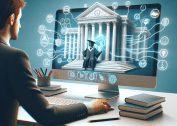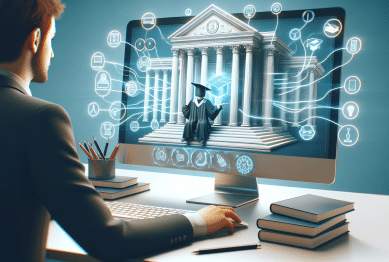Explore how remote learning is impacting education and society worldwide. Discover practical approaches, common myths, and hidden opportunities influencing students and families in this evolving online education era.
The Rise of Remote Learning in Modern Education
Remote learning has shifted from niche option to a mainstream educational approach. Once thought of as an alternative for a small percentage of learners, it’s now integrated throughout school systems, universities, and professional development centers. This shift accelerated as technology became more affordable and internet access spread. Schools worldwide started adopting flexible, interactive platforms, enabling students to engage with coursework from nearly anywhere. For families, this transition means new possibilities—and sometimes new challenges—in balancing home, work, and schooling responsibilities.
The impact of remote learning extends beyond convenience. With robust online curricula, students encounter a variety of learning materials tailored to diverse abilities and preferences. Synchronous classes allow for real-time interaction, while asynchronous content empowers students to learn at their own pace. This flexibility supports greater accessibility for individuals with different schedules or physical needs, creating a more inclusive educational landscape. Schools continue to explore these advantages in hopes of reducing educational gaps and improving learning outcomes.
Despite these advancements, remote learning introduces fresh obstacles. Not every household has equal access to technology, which may widen digital divides. Educators must balance new teaching methods, assessment challenges, and issues with student engagement. As a result, meaningful collaboration between schools, parents, and communities remains vital for ensuring all learners benefit from online education, fostering lifelong adaptability and resilience.
Remote Learning vs. Traditional Classrooms
Comparing remote learning with traditional classroom environments brings complex questions. In-person schooling offers direct interaction, hands-on activities, and an established framework for social development. However, remote learning opens new doors by allowing students to access high-quality materials from global educators, and it often encourages greater self-discipline and digital literacy—abilities now valued in modern workplaces.
Some learners thrive in virtual classrooms because these platforms eliminate distractions and commute times. Adaptive technologies, such as videoconferencing and learning management systems, accommodate different learning speeds. Traditional settings, on the other hand, offer a sense of community and more opportunities for spontaneous discussion. Each method has its merits, with students often experiencing varying degrees of engagement and comfort depending on learning style and personal circumstances.
School districts and higher education institutions are finding value in hybrid approaches, blending remote instruction with on-campus experiences. By integrating digital content with face-to-face teaching, students enjoy a fuller, more interactive education. Flexibility, collaboration, and customization are key strengths of this model, helping students develop critical thinking skills and adaptability for the changing demands of society and employment.
Student Outcomes and Remote Learning Performance
Research on student success in remote learning environments reveals a nuanced story. Some students excel in online courses—reporting improved grades and stronger retention, particularly when provided with engaging digital content and instructor support. Others, however, may experience challenges related to motivation, time management, or social isolation. The effectiveness of online learning often hinges on students’ self-regulation skills and access to technological resources.
Socioeconomic factors play a substantial role in educational outcomes. Households with reliable internet, dedicated workspaces, and supportive caregivers tend to see more favorable results. By contrast, limited connectivity can hinder participation in live lessons and assignment submissions. Educational equity is a central debate, prompting schools and governments to invest in tools and strategies that bridge digital gaps and enable broader participation.
Ongoing assessment and feedback loops are vital in remote learning ecosystems. Studies show that students who receive regular, meaningful feedback from instructors perform better and remain more motivated. This highlights the importance of interactive elements—such as group projects, discussions, and real-time Q&A sessions—in keeping learners engaged and on track for long-term achievement. Creative use of technology continues to support these outcomes across diverse student populations.
Equity and Accessibility in Digital Education
Ensuring equity in remote learning remains a top priority for educational institutions globally. Disparities in device access, broadband internet, and home learning environments affect millions of students. In response, advocacy groups and government agencies are launching initiatives to provide low-cost laptops, subsidized data plans, and neighborhood Wi-Fi hubs, helping to close persistent opportunity gaps.
Digital accessibility goes beyond physical devices—it includes the usability of course platforms, availability of captioned video lectures, and customized accommodations for students with disabilities. Universal Design for Learning (UDL) principles encourage educators to offer materials in multiple formats, ensuring everyone can participate regardless of learning style or ability. These strategies can empower all students to embrace digital learning and maximize their outcomes.
Language barriers and cultural context also shape remote learning experiences. Providing multilingual support and culturally relevant content builds a stronger, more inclusive educational community. Collaborative efforts between schools, families, and community organizations are effective in guiding students through digital education, promoting both social growth and academic achievement for diverse populations.
Technology’s Role in Shaping Education and Society
Technological innovation is rewriting education’s future. Interactive e-learning platforms, AI-powered tutoring, and gamified lessons transform traditional teaching into dynamic, user-centered experiences. Many students find that adaptive software and real-time feedback boost motivation and streamline their learning journeys. These advances are especially beneficial in science, technology, engineering, and mathematics (STEM) fields, where simulations and visualization tools provide practical, hands-on practice.
Schools are harnessing technology to cultivate digital citizenship and critical thinking. By navigating the internet, evaluating credible sources, and participating in moderated forums, students acquire skills pivotal to professional and civic life. Parental involvement and digital literacy classes further reinforce responsible technology use, addressing challenges such as screen fatigue and misinformation along the way.
Beyond classrooms, remote learning technologies foster lifelong learning and community education. Adults now access micro-courses, certifications, and training programs regardless of location. This democratization of education supports workforce development, economic mobility, and civic engagement at every age, further embedding technology’s role in society’s ongoing evolution.
Effective Strategies for Remote Learning Success
Adapting to remote learning requires intentional strategies for students and educators alike. Establishing a structured routine is crucial—regular schedules create consistency and help learners manage assignments and deadlines. Creating a designated workspace, minimizing distractions, and using checklists are simple but powerful ways to enhance focus. These habits increase the likelihood of staying engaged and achieving academic milestones.
Effective communication forms the backbone of remote learning. Encouraging open dialogue between teachers, students, and guardians helps identify challenges early and provides opportunities for clarification or support. Many schools have incorporated secure messaging platforms, video calls, and regular virtual office hours to foster community and address learning needs in real-time.
Continuous professional development for educators also leads to better student outcomes. Training on innovative instructional strategies, digital assessment tools, and inclusive practices prepares teachers to create dynamic and equitable online classrooms. By leveraging support networks and embracing new technologies, both students and faculty build confidence and resilience in remote learning environments.
References
1. U.S. Department of Education. (n.d.). Reimagining the Role of Technology in Education. Retrieved from https://tech.ed.gov/files/2017/01/NETP17.pdf
2. UNESCO. (n.d.). The Impact of COVID-19 on Education. Retrieved from https://en.unesco.org/covid19/educationresponse
3. Educause. (n.d.). 7 Things You Should Know About the HyFlex Course Model. Retrieved from https://library.educause.edu/resources/2020/7/7-things-you-should-know-about-the-hyflex-course-model
4. National Center for Education Statistics. (n.d.). Remote Learning During COVID-19. Retrieved from https://nces.ed.gov/fastfacts/display.asp?id=113
5. CAST. (n.d.). Universal Design for Learning Guidelines. Retrieved from https://udlguidelines.cast.org/
6. Brookings Institution. (n.d.). How COVID-19 Is Affecting Education. Retrieved from https://www.brookings.edu/research/how-covid-19-is-affecting-education/









